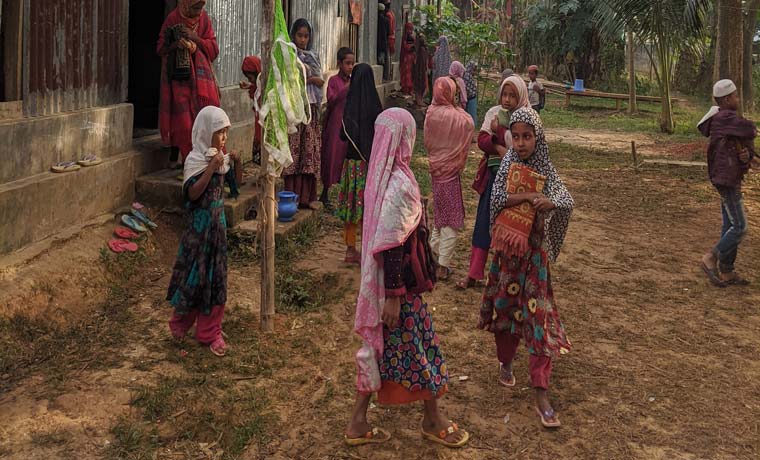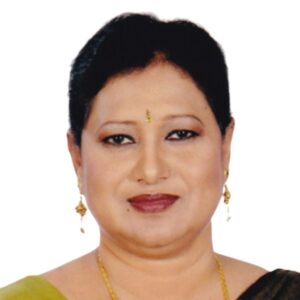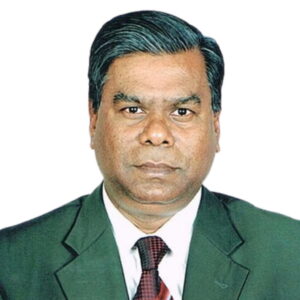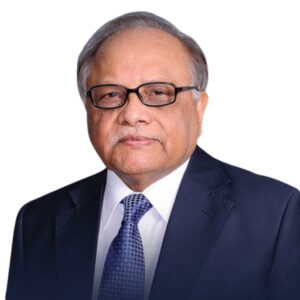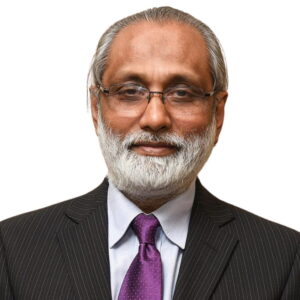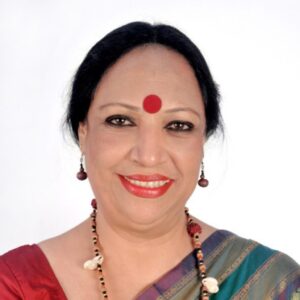Bangladesh is experiencing a demographic transition currently, and it is estimated that the end of Bangladesh’s demographic window of opportunity will be around 2035-2036. Youth between the ages of 18 and 35 account for more than 33% of Bangladesh’s total population; which makes Bangladesh uniquely positioned to capitalize on the benefits of the demographic dividend.
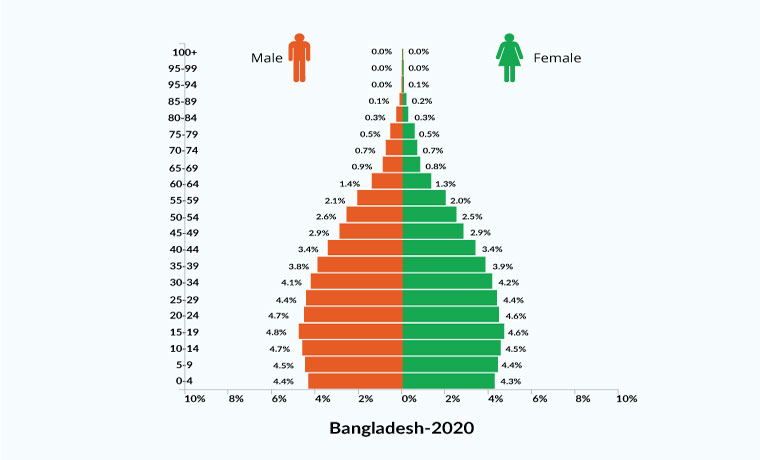
However, the youth of Bangladesh lack marketable skills. The youth employment rate is 10.6%, and 29.8% of the total youth population. Being not in Education, Employment, or Training (NEET), they significantly deter potential economic growth. Youth entrepreneurship can be a possible solution to the challenge of youth unemployment in addition to developing human capital; which is essential to harness the demographic dividend.
Overview of Relevant Policy Framework
Youth-centric policies is integrated into multiple policy frameworks, each with different objectives such as education, development of skills, or employment creation. The following section presents strategies and goals pertaining to youth entrepreneurship specifically across multiple relevant policy plans.
The 7th Five-Year Plan: It was developed for the period between 2016 and 2020. The big idea behind most of the key strategies undertaken by the plan was Vision 2021, digitizing Bangladesh. The Government of Bangladesh put special emphasis on the development of Information & Communication Technology (ICT) infrastructure and service delivery. A key force behind achieving this goal was entrepreneurship.
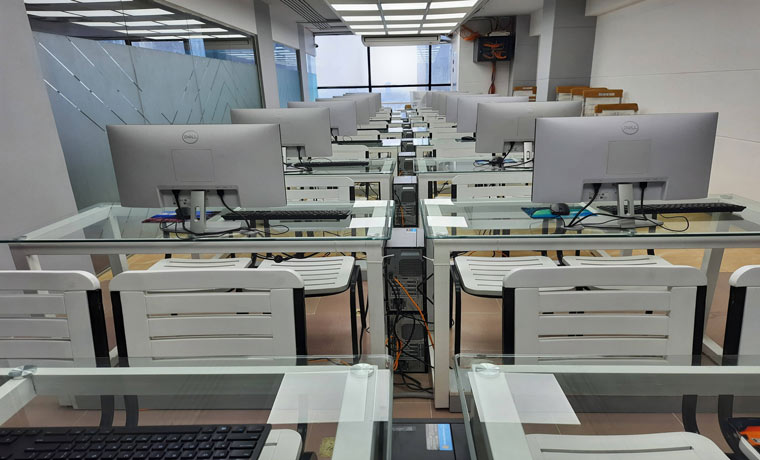
The nascent ICT industry needed many ICT-based SMEs to adopt such technologies adequately. To this end, the government set up plans to build more Hi-Tech parks and Software Technology Parks. Union Digital Centers (UDC) would be turned into Business Process Outsourcing hubs with high-speed internet connections. To equip the ICT MSMEs with product development capabilities; a plan to develop an innovation ecosystem and startup incubation has also been established. This would empower a creative and innovative group of entrepreneurs.
Women entrepreneurship is another area where the government has put special emphasis. Women entrepreneurship development program of SME Foundation would be prioritized and strengthened under the 7th Plan. It identified a need for Business Development Services for women and put a plan in place to meet those needs. Women entrepreneurship needed to be supported and prepared to qualify for institutional finance and market linkage; with the support of various women-focused chambers of commerce and industry.
Developing a skilled population through Technical and Vocational Education and Training (TVET) is another focus area under this plan. Polytechnic Institutes and SSC Vocational Courses at the Upazila level can equip the working-age population with the necessary skills and promote entrepreneurship.
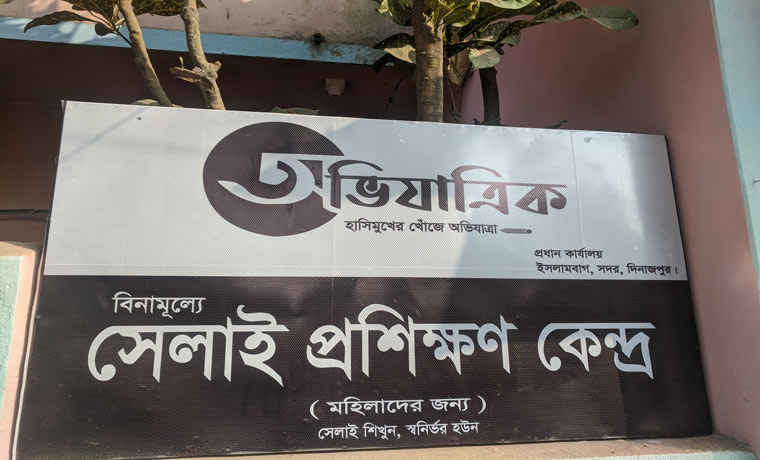
8th Five Year Plan: The objective of the 8FYP (Five Year Plan) is to promote pro-poor growth, with harnessing demographic dividend being one of the primary goals. From a youth perspective, a target has been set to reduce youth unemployment from 10.6% to 5% and the NEET population from 29.8% to 15% by 2025. Under the 8FYP, ICT-based entrepreneurship will be promoted by embracing the 4th Industrial Revolution. Issues such as high taxation, insufficient allocation of funds, and technical and professional skills gaps will be addressed under the 8FYP to support digital infrastructure and encourage entrepreneurship. Multiple projects such as “She Power Project: Sustainable Development for Women through ICT” have also been launched to increase nationwide women entrepreneurship in ICT.
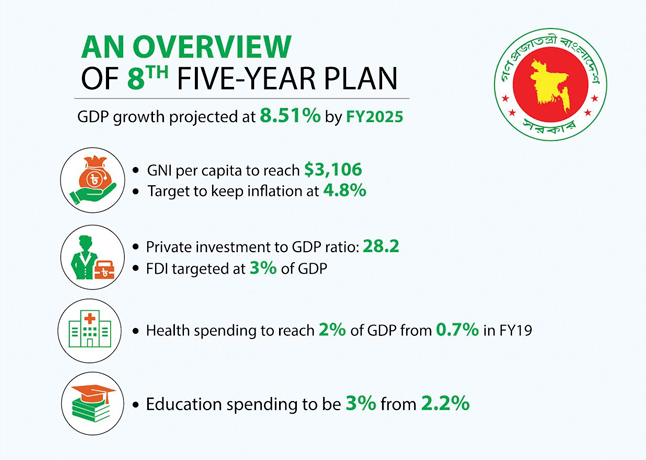
The 8FYP recognized that self-employment is a critical avenue for women due to limited job opportunities in addition to issues such as maintaining a work-life balance and a lack of marketable skills. Institutional, financial, and marketing support will be provided to encourage women entrepreneurship under different agencies such as SME Foundation, Bangladesh (BSCUC) and Jatiyo Mohila Shongstha (JMS). Additional policies are being developed to increase women’s participation in economic activities, particularly self-employment, by increasing access to relevant information and providing tax holidays.
The 8FYP also aims to adopt a wider lens when it comes to entrepreneurship, by increasing access to resources and support in marginalized and vulnerable communities. CMSMEs have huge potential to generate non-farm employment in both rural and urban areas, especially for the less educated youth population. The institutional and financial support to CMSMEs will be substantially enhanced through the collaboration of the Small Business Agency (SBA) and the Bangladesh Bank in order to enhance the dynamism of CMSMEs.
In coherence with the National Youth Policy (2017), the 8FYP focuses on attaining education, training, and employment-related objectives for youth development to nurture human capital in addition to promoting self-employment of youth through entrepreneurship based on training and access to institutional credit. Increased quality of education and vocational training will be pursued to reconcile any existing skill gaps. SME credit and supportive linkage facilities will be provided through the Rural Development and Co-operatives Division (RDCD) and partnerships with private institutions/NGOs such as BYEAH to promote small entrepreneurship.
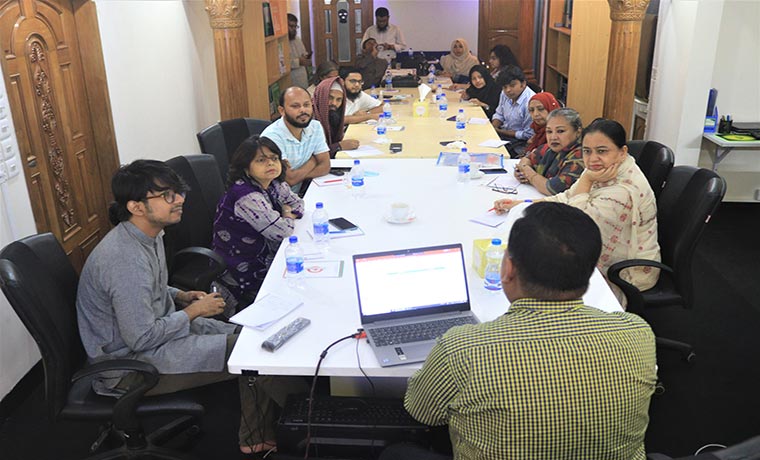
National Youth Policy (2017): In the last NYP, which emphasizes the empowerment of youth at a grassroots level; numerous objectives closely align with addressing the challenge of youth unemployment. The eight priority areas outlined are health and recreation; good governance; sustainable development; equitable development; building a healthy society; globalization; and survey and research. However, the targets set by the National Youth Policy (NYP) 2017 are not data-driven and thus cannot be objectively evaluated in terms of progress and feasibility.
Furthermore, awareness of this policy and its objectives is not prevalent among the youth. The key objectives of the NYP17, which has become the central framework for youth-related policies of the government; are self-growth, education, social protection, sustainable development, and nation-building. From these core goals, it is apparent that the NYP17 coincides with the FYPs in multiple areas and thus it must be ensured they work together to reinforce rather than contradict one another.
SME Policy 2019: Bangladesh SME Policy for 2019 aimed to assist SMEs to grow and conduct business effectively. It also contains goals and strategies to promote entrepreneurship and assist aspiring entrepreneurs in the SME space.
The policy aimed to improve the investment and business environment for SMEs by simplifying legal and administrative processes.
To enable better access to finance and promote entrepreneurship; the policy was introduced to create a sustainable financing system that would cater to the credit needs of SMEs. Another step in this process was to ensure easy access to credit and a low-interest rate for SME loans by strengthening the Credit Wholesaling (CWS) program.
In order to encourage entrepreneurship, the policy set a target to provide a one-stop solution for starting a business and use digital tools to ease the start-up process for aspiring entrepreneurs.
Comparative Analysis of Relevant Policies:
A comparative analysis is provided below to identify areas of overlap and the extent to which these policies complement each other in achieving the specific goals of ICT in Entrepreneurship, Women Empowerment, and Skill Development.
| 7FYP | 8FYP | NYP17 | SME19 | |
|---|---|---|---|---|
| Mission Statement | The big idea behind most of the key strategies undertaken by the plan was Vision 2021, digitizing Bangladesh. | The big idea is to promote pro-poor growth; through harnessing the demographic dividend and by reducing youth unemployment to 5% and the NEET population to 15% by 2025. | The main mission is to realize the full potential of the youth by creating facilitating conditions to empower them and develop youth into human capital. | Bangladesh SME Policy for 2019 aimed to assist SMEs to grow and conduct business effectively while promoting entrepreneurship in the SME space. |
| ICT in Entrepreneurship | Expediting service delivery with ICT and strengthening ICT-based start-ups was emphasized. | Encourages ICT-based entrepreneurship by reducing taxation; providing higher access to resources and training in addition to institutional support. | Encourage higher ICT-based education and training to increase employment in this area. | The policy aims to integrate ICT into government service delivery. It also contains strategies to increase ICT usage in SMEs. |
| Women Participation | Women entrepreneurship is given special focus. Women chambers and associations along with SME Foundation were encouraged to distribute Business Development Services. | Institutional, financial, and marketing support will be provided to encourage women’s entrepreneurship under different agencies such as SME Foundation; BSCUC, and JMS and government partnerships with private institutions. | Providing women entrepreneurs with incentives to market their products and display higher entrepreneurial efforts. | Extending programs to women entrepreneurs and providing specialized services to them is part of the Strategic Goals under this policy. |
| Skill Development | Polytechnic and SSC Vocational Institutes were planned to be set up at the Upazila level to empower youth entrepreneurship. | Focus on demand-driven skill development systems to enhance human development. | Provision of vocational training and micro-credit facilities; and integration of the youth in national development programs to encourage youth entrepreneurship. | It focuses on training and helping current entrepreneurs develop. This agenda is a Strategic Goal. |
| Policy Coherence | Strongly focuses on increasing efficiency and service penetration for entrepreneurs which carries onto 8FYP. Some strategies are coherent with the SME Policy 2019. | Operationalizes the targets set by NYP17 during the 7FYP and outlines consistent youth-centric strategies. | Does not take recent circumstances such as online education into account and does not translate into operational strategies. | Shares numerous targets with NYP17.Highly coherent with 7FYP in goals and strategies. Not as specific and focused as 8FYP in terms of youth development. |
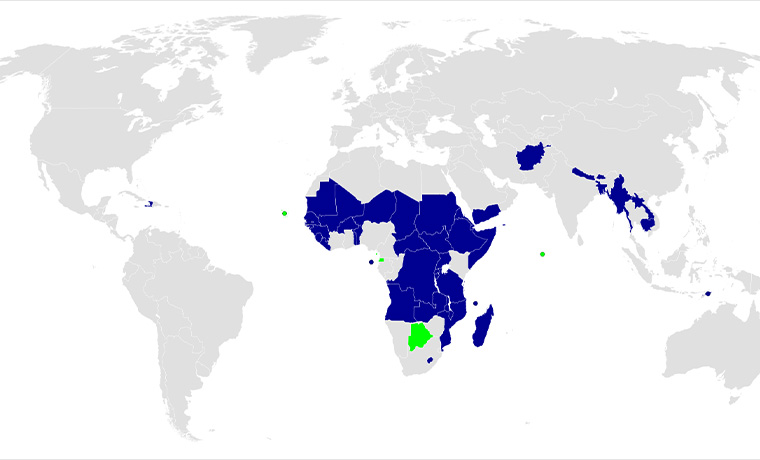
Youth Entrepreneurship in post-LDC Bangladesh
Bangladesh is set to graduate from the Least Developed Country or LDC category in 2026. The LDC graduation will bring various challenges in the form of lost market access and reduced concessions. However, it is also a stamp of approval in the global community. Bangladesh must rely on its young entrants in the coming days to alleviate the strains of LDC graduation. It is important to note that the demographic dividend will last until 2035-36.
Multiple policy frameworks have emphasized the importance of harnessing the demographic dividend; especially given the closing window and Bangladesh’s impending LDC graduation. As a result; children must be invested right away in order to maximize the productive potential of adults in the future. Policies can facilitate this by allocating significant resources and plans for public education and training, as well as partnerships with the private sector. However, it must be ensured that these policies translate into more widespread access to these resources, even at the grass-root level. Bangladesh can not continue to depend on low-cost labor to drive the economy. As India has illustrated, economic growth and substantial socio-economic development can be achieved by promoting the adoption of technology; highly specialized labor, and consistent efforts directed at human capital development.
Recommendations
- Soft skill development: Entrepreneurship requires one to have various soft skills along with core hard skills. Sales, marketing, communication, etc. are some of the most important soft skills for entrepreneurs. However, TVET and other traditional education and skill development programs mostly focus on hard skills. So, aspiring entrepreneurs and the youth at large should be better equipped with the necessary soft skills. The design and delivery of such a training module can be daunting but it is of utmost importance. This can improve various market systems and create a generation of skilled entrepreneurs.

2. Adoption of ICT: The government has rightfully focused heavily on IT/ITES businesses that will develop the ICT landscape in Bangladesh. However, mass adoption of ICT by regular businesses, especially MSMEs, is also essential. To make MSMEs more competitive in the marketplace, they need to be equipped with appropriate technology. Since there is a policy gap here, bilateral and multilateral partners can play an important role in increasing ICT adoption by regular businesses. Organizations like BYEAH arrange different training on Digital Marketing, Cybersecurity to enhance and develop the skills of new entrepreneurs.
3. Cluster Promotion: CMSMEs have emerged as a crucial driver of socio-economic development and a major source of equitable growth in Bangladesh over the years. However, they are hindered by inadequate access to financial or human resources. Asian countries like Singapore; Taiwan and Malaysia have experienced industrial growth by successfully splitting up the market into clusters and employing the use of targeted technology to complement the effort of human resource development. Growth and productivity change, especially in SME and industrial clusters, can be observed by committing to an industrial policy. Economic growth can be achieved by redirecting training resources to these clusters; which could promote the adoption of technology in everyday business activities as well as upskilling individuals at the grassroots level. Export strategies should also be developed and implemented in order to encourage local producers.
References:
1. General Economics Division Bangladesh Planning Commission Government of the People’s Republic of Bangladesh, ‘8th Five Year Plan July 2020 – June 2025’ (2020) <https://oldweb.lged.gov.bd/UploadedDocument/UnitPublication/1/1166/8FYP.pdf> accessed 17 May 2022
2. General Economics Division Bangladesh Planning Commission Government of the People’s Republic of Bangladesh, ‘7th Five Year Plan FY 2016 – FY 2020’ (2015) <www.unicef.org/bangladesh/sites/unicef.org.bangladesh/files/2018-10/7th_FYP_18_02_2016.pdf> accessed 17 May 2022
3. Ministry of Industries Government of the People’s Republic of Bangladesh, ‘SME Policy 2019’ (2019) <http://bscic.portal.gov.bd/sites/default/files/files/bscic.portal.gov.bd/page/7a956433_c02e_483d_9c17_db194d9f4a23/2020-01-01-19-01-8029ba8887b407ce0836783a9424a605.pdf> accessed 17 May 2022
4. Ministry of Youth and Sports Government of the People’s Republic of Bangladesh, ‘National Youth Policy 2017’ (2017) <https://dyd.portal.gov.bd/sites/default/files/files/dyd.portal.gov.bd/policies/21e565b2_252f_4f80_bfce_31a1cb33163d/Draft%20English%20Version%20of%20National%20Youth%20Policy%202017%20(1).pdf> accessed 17 May 2022
5. ‘Terms of Reference (ToR) For the Study on SME Clusters in Bangladesh-2020. (An Updated Cluster Mapping)’ (2020) <https://smef.portal.gov.bd/sites/default/files/files/smef.portal.gov.bd/notices/5f65d5b7_d8c8_4fc8_a16a_9d61074087ff/2020-11-09-11-57-686314fe80faa877d8b36dc859012226.pdf> accessed 17 May 2022

